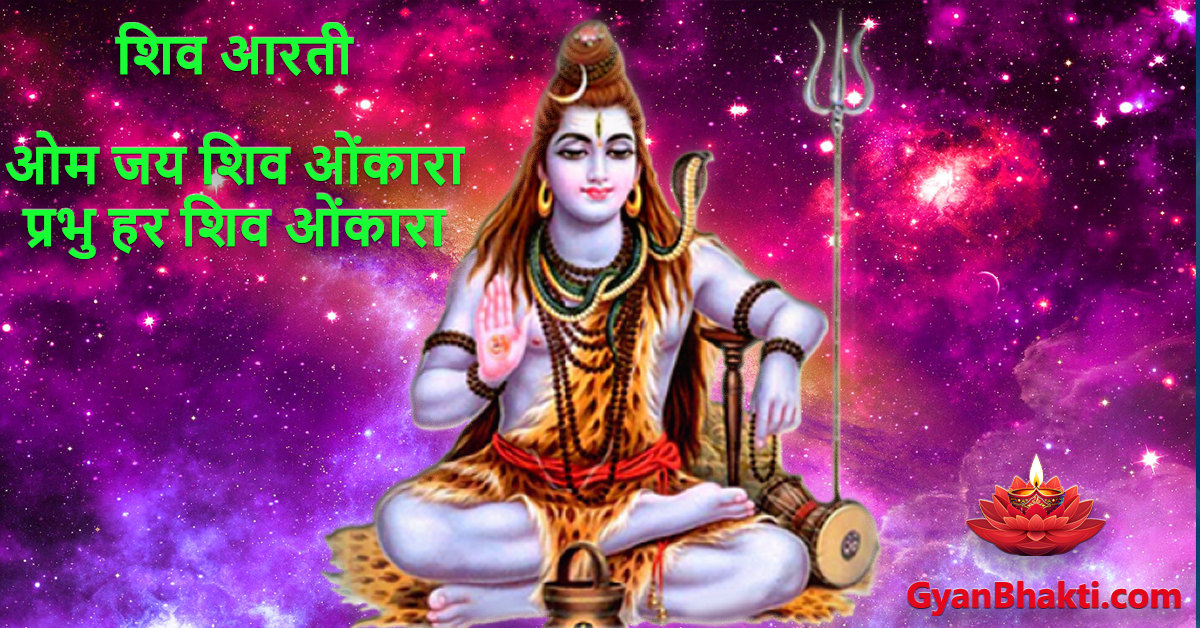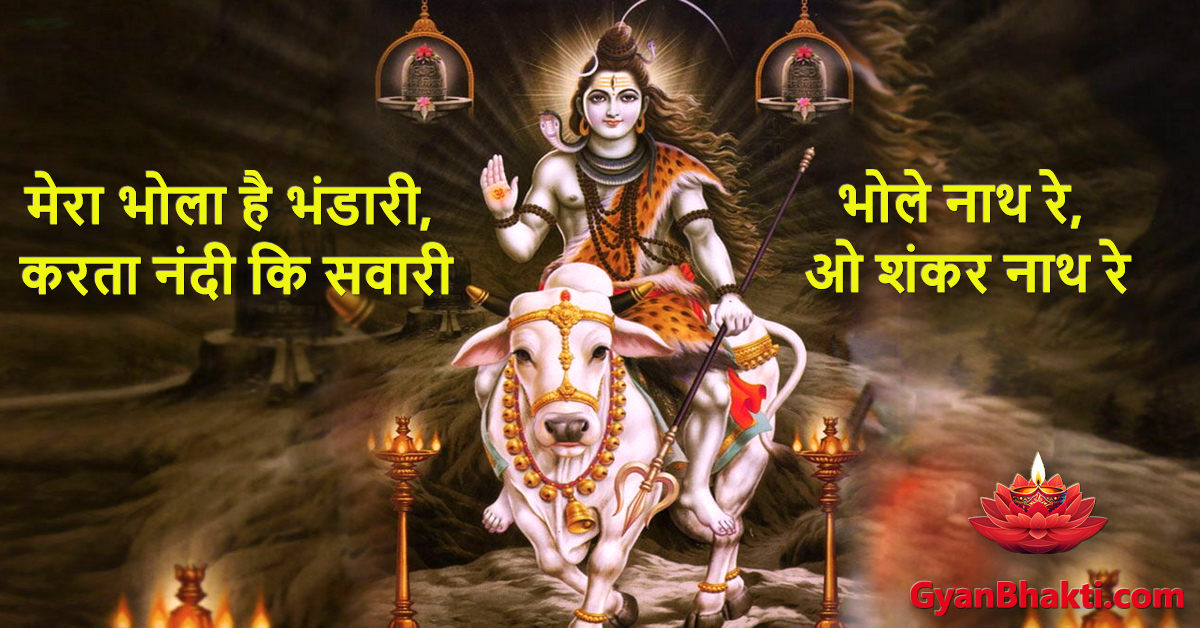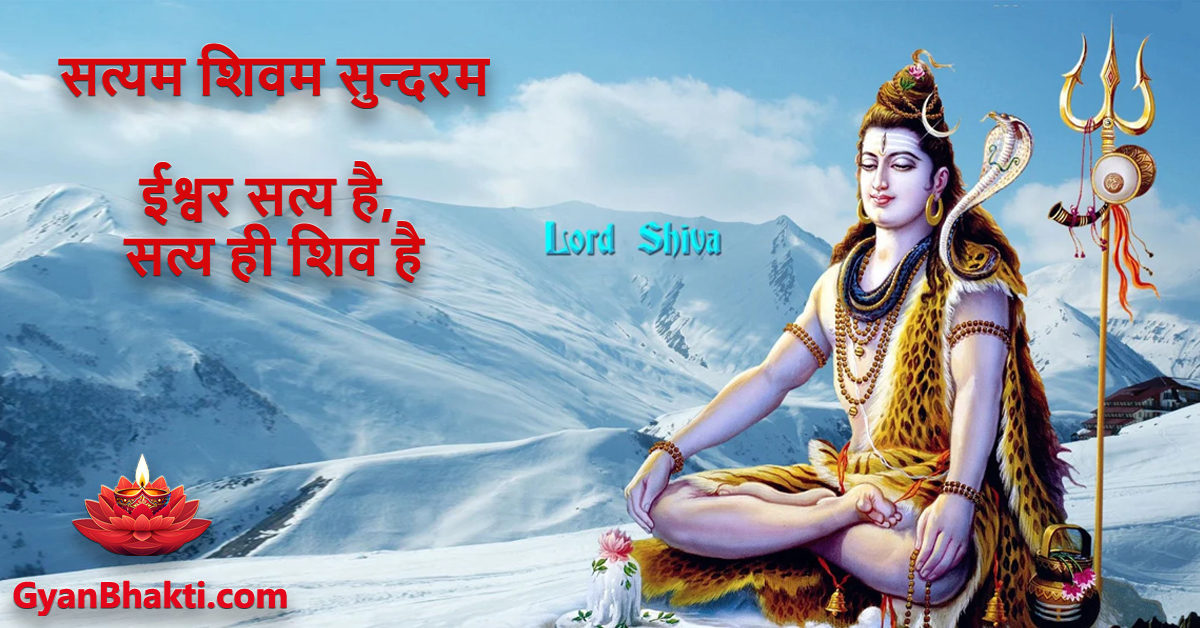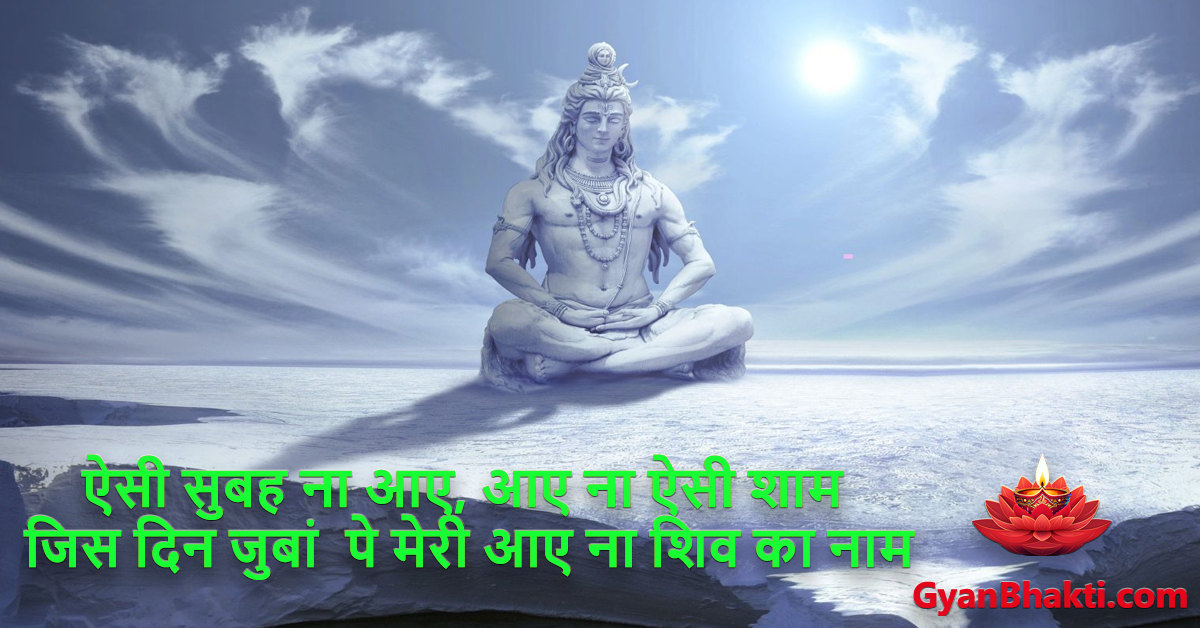Hai Dhanya Teri Maya Jag Me – Shiv Shankar Damru Wale
Hai dhanya teri maaya jag mein,
shiv shankar damru wale.
Namaami shankar, namaami har har,
namaami deva maheshvara.
Namaami paarabrahm parameshvar,
namaami bhole digambaraa.
Hai dhanya teri maaya jag mein,
O duniya ke rakhwaale.
Shiv shankar damru wale,
shiv shankar bhole bhaale.
Jo dhyaan tera dhar le man mein,
vo jag se mukti paye.
Bhav saagar se usaki naiya,
too pal mein paar lagaaye.
Sankat mein bhakto ko badh kar
too bhole aap sambhaale.
Shiv shankar damru wale,
shiv shankar bhole bhaale.
Hai koi nahin is duniya mein
tere jaisa varadaani.
Nitt sumarin karate naam tera
sab sant rishi aur gyaani.
Na jaane kis par khush ho kar
too kya se kya de daale.
Shiv shankar damru wale,
shiv shankar bhole bhaale.
Trilok ke swaami ho kar bhi
kya aughad roop banaaye.
Kar mein damru trishool liye
aur naag gale lipataaye.
Tum tyaag ke amrit, pite ho
nit prem se vish ke pyaale.
Shiv shankar damru wale,
shiv shankar bhole bhaale.
Tap khandit karane kaam dev
jab indra lok se aaya.
Aur saadh ke apana kaam baan
tum par vo moorakh chalaaya.
Tab khol tisaraa nayan
bhasam usako pal mein kar daale.
Shiv shankar damru wale,
shiv shankar bhole bhaale.
Jab chali kaalika krodhit ho
khappar aur khadag uthaaye.
Tab haahaakaar macha jag mein
sab sur aur nar ghabaraaye.
Tum beech dagar mein so kar
shakti devi ki har daale.
Shiv shankar damru wale,
shiv shankar bhole bhaale.
Ab drshti daya ki bhakto par
he damru-dhar kar dena.
Bhakton ki jholi
gauri shankar bhar dena.
Apanaa hi sevak jaan
hame bhi charanon mein apanaa le.
Shiv shankar damru wale,
shiv shankar bhole bhaale.
Hai dhany teri maaya jag mein, o duniya ke rakhwaale.
Shiv shankar damru wale, shiv shankar bhole bhaale.
Hai Dhanya Teri Maya Jag Me – Shiv Shankar Damru Wale
Lakhbir Singh Lakkha
Shiv Bhajan
- Om Jai Shiv Omkara - Shiv Aarti
- Saj Rahe Bhole Baba Nirale Dulhe Mein
- Mera Bhola Hai Bhandari, Kare Nandi Ki Sawari
- Shiv Shankar Ko Jisne Puja
- Satyam Shivam Sundaram
- Aisi Subah Na Aaye, Aaye Na Aisi Shaam
- Kailash Ke Nivasi Namo Bar Bar
- Sheesh Gang Ardhang Parvati - Shiv Aarti
- Hey Shambhu Baba Mere Bhole Nath
- Shri Badrinath Stuti - Badrinath Aarti
- Bolo Bolo Sab Mil Bolo Om Namah Shivaya
- Shiv Shankar Damru Wale - Hai Dhanya Teri Maya Jag Me
- Bum Bhole - Yahi Wo Tantra Hai
- Shiv Ka Naam Lo, Har Sankat Mein Om Namo Shivaay
- Subah Subah Le Shiv Ka Naam
- Om Sundaram Omkar Sundaram
- Shankar Mera Pyara, Maa ri Maa Mujhe Murat La De
- Aao Mahima Gaye Bhole Nath Ki
Shiv Shankar Damru Wale – Hai Dhanya Teri Maya Jag Me – Spiritual Meanings
Hai dhanya teri maaya jag mein, O duniya ke rakhwaale
“Hai dhanya teri maaya jag mein” means “Blessed is your presence and you maya in this world.” The bhajan acknowledges the divine presence of Lord Shiva and expresses gratitude for his existence. “O duniya ke rakhwaale” means “O protector of the world.” This line reveres Lord Shiva as the guardian and preserver of the universe.
Shiv shankar damru wale, shiv shankar bhole bhaale
In this verse, Lord Shiva is praised with different attributes. “Shiv shankar damru wale” acknowledges him as the one who holds the damru (a small drum-like musical instrument) in his hand, which is often associated with cosmic creation and rhythm. “Shiv shankar bhole bhaale” reveres him as the innocent and compassionate one.
Jo dhyaan tera dhar le man mein, vo jag se mukti paye
This line emphasizes the importance of meditation and contemplation on Lord Shiva. It states that those who hold his remembrance in their hearts can attain liberation (mukti) from the cycle of birth and death.
Bhav saagar se usaki naiya, too pal mein paar lagaaye
This verse uses the metaphor of a boat to represent the devotee’s journey across the ocean of worldly existence (bhav saagar). By surrendering to Lord Shiva, the devotee can easily cross this ocean and reach the other shore (pal mein paar lagaaye).
Sankat mein bhakto ko badh kar too bhole aap sambhaale
Here, Lord Shiva is hailed as the one who takes special care of his devotees during times of distress (sankat). The bhajan expresses faith in his compassionate nature, as he himself protects his devotees.
Hai koi nahin is duniya mein, tere jaisa varadaani
This line conveys that there is no one like Lord Shiva in this world, and he is the most benevolent bestower of boons (varadaani).
Nitt sumarin karate naam tera, sab sant rishi aur gyaani
The devotee is encouraged to continuously meditate and chant the name of Lord Shiva (nitt sumarin karate naam tera). It is believed that saints, sages, and the knowledgeable ones also engage in constant remembrance of his name.
Na jaane kis par khush ho kar, too kya se kya de daale
This final verse expresses awe and wonder at Lord Shiva’s blessings and grace. It reflects on how, without any apparent reason, he can transform someone’s life by bestowing unimaginable gifts and boons.
Trilok ke swaami ho kar bhi, kya aughad roop banaaye
“Trilok ke swaami ho kar bhi” means “Even though you are the Lord of the three worlds (Trilok), why did you assume the formidable (augadh) form?” The devotee wonders why Lord Shiva took on a fierce and awe-inspiring form.
Kar mein damru trishool liye, aur naag gale lipataaye
This verse describes Lord Shiva’s divine appearance. “Kar mein damru trishool liye” refers to Lord Shiva holding a damru (drum) and a trishool (trident) in his hands. “Aur naag gale lipataaye” means “and a snake is wrapped around his neck,” symbolizing his control over the powerful serpent energies.
Tum tyaag ke amrit, pite ho nit prem se vish ke pyaale
This line reflects on Lord Shiva’s unique nature. “Tum tyaag ke amrit” means “You drink the nectar of renunciation.” Lord Shiva is known for consuming the poison (vish) that emerged during the churning of the ocean, signifying his willingness to bear the burdens of the universe with love and compassion.
Tap khandit karane kaam dev, jab indra lok se aaya
This verse refers to an incident where Kamadeva, the god of love, disturbed Lord Shiva’s meditation in Indra’s heavenly realm. “Tap khandit karane kaam dev” means “When Kamadeva dared to disrupt your meditation.” This led to Kamadeva being turned into ashes by Lord Shiva’s fiery third eye.
Aur saadh ke apana kaam baan, tum par vo moorakh chalaaya
Here, the bhajan mentions how the arrogant Kamadeva used his arrows (kaam baan) to try to manipulate Lord Shiva’s emotions.
Tab khol tisaraa nayan, bhasam usako pal mein kar daale
“When you opened your third eye (tisaraa nayan),” Lord Shiva reduced Kamadeva to ashes (bhasm) in an instant, symbolizing the power of his divine consciousness.
Jab chali kaalika krodhit ho, khappar aur khadag uthaaye
“Jab chali kaalika krodhit ho” refers to the goddess Kali, an incarnation of Parvati, who becomes fierce and enraged. “Khappar aur khadag uthaaye” means “holding a skull bowl and a sword.” This line portrays Kali in her formidable form.
Tab haahaakaar macha jag mein, sab sur aur nar ghabaraaye
When Kali roamed the world in her fierce form, there was turmoil and fear among all celestial beings (sur) and humans (nar).
Tum beech dagar mein so kar, shakti devi ki har daale
In this verse, Lord Shiva lies down in the path (dagar) where Kali is roaming fiercely. By doing so, he calms her anger and brings her back to a peaceful state.
Ab drshti daya ki bhakto par, he damru-dhar kar dena
“Now, shower your compassionate gaze upon your devotees, O holder of the damru (Lord Shiva).” The devotee seeks Lord Shiva’s benevolent and compassionate blessings for all his devotees.
Bhakton ki jholi Gauri Shankar bhar dena
“Fill the devotees’ hearts with your divine blessings, O Gauri Shankar (an epithet of Lord Shiva and Parvati).” The bhajan seeks blessings and abundance from Lord Shiva and Parvati for the devotees.
Apanaa hi sevak jaan hame bhi charanon mein apanaa le
The bhajan concludes with the devotee expressing a desire to be recognized as Lord Shiva’s own servant and to be embraced by his feet, seeking his divine grace and guidance.
This bhajan praises Lord Shiva’s unique attributes, his protective and compassionate nature, and his role as the supreme deity of the universe. It also references the story of Kamadeva and Kali to illustrate Lord Shiva’s immense power and his affectionate care for his devotees.
Overall, this bhajan shows the greatness of Lord Shiva, his compassionate nature, and the power of devotion to him. It encourages the devotee to meditate on him constantly and surrender to his divine will.
Shiv Bhajan
- Hey Shiv Shankar Param Manohar
- Shankar Teri Jatao Se, Behti Hai Gang Dhaara
- Ganga Kinare Chale Jana
- Hey Bhole Shankar Padharo
- Jai Girijapati Deen Dayala - Shiv Chalisa
- Man Mera Mandir Shiv Meri Puja
- Milta Hai Sacha Sukh Keval, Shivji Tumhare Charano Mein
- Ab Daya Karo Hey Bholenath Lyrics
- Mahadev Shankar Hai Jag Se Nirale
- Hey Shiv Pita Parmatma
- Jai Bhole Jai Bhandari Teri Hai Mahima Nyari
- Subah Subah Hey Bhole Karte Hain Teri Pooja
- Bhole Nath Se Nirala Koi Aur Nahi
- O Shankar Mere Kab Honge Darshan Tere
- Bhole Ka Deewana
- Bigdi Meri Bana Do Mere Baba Bhole






